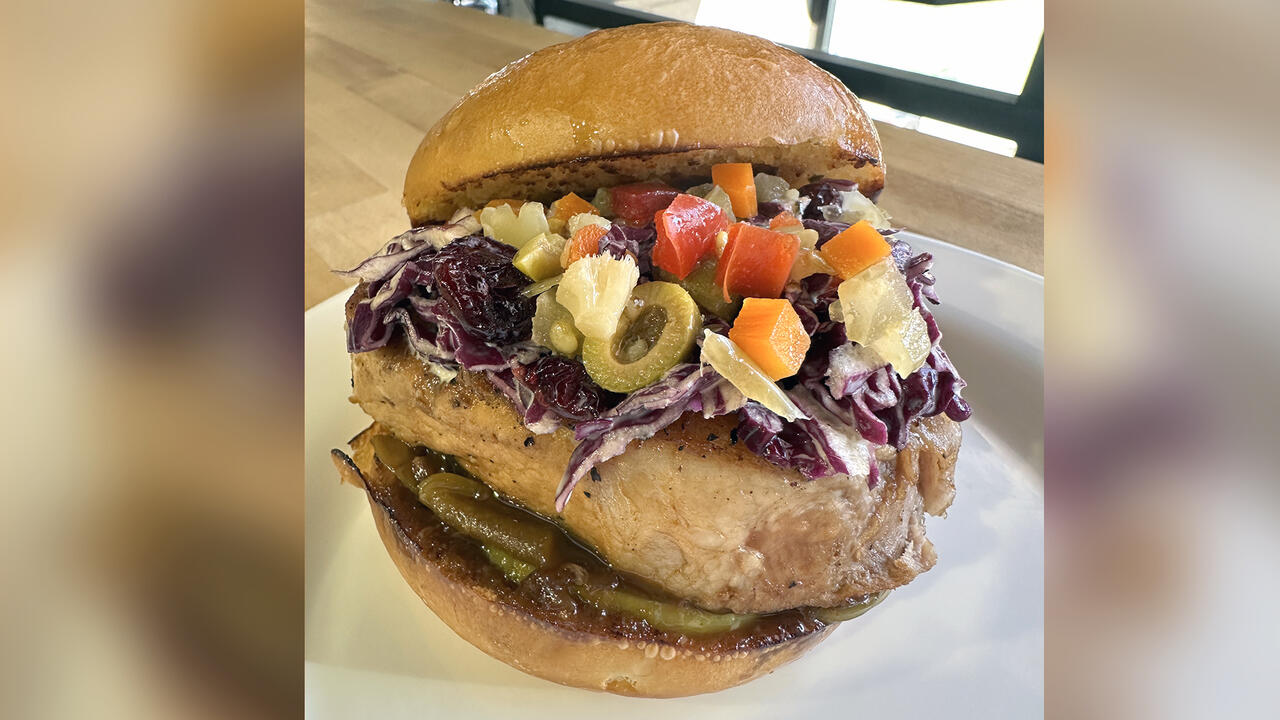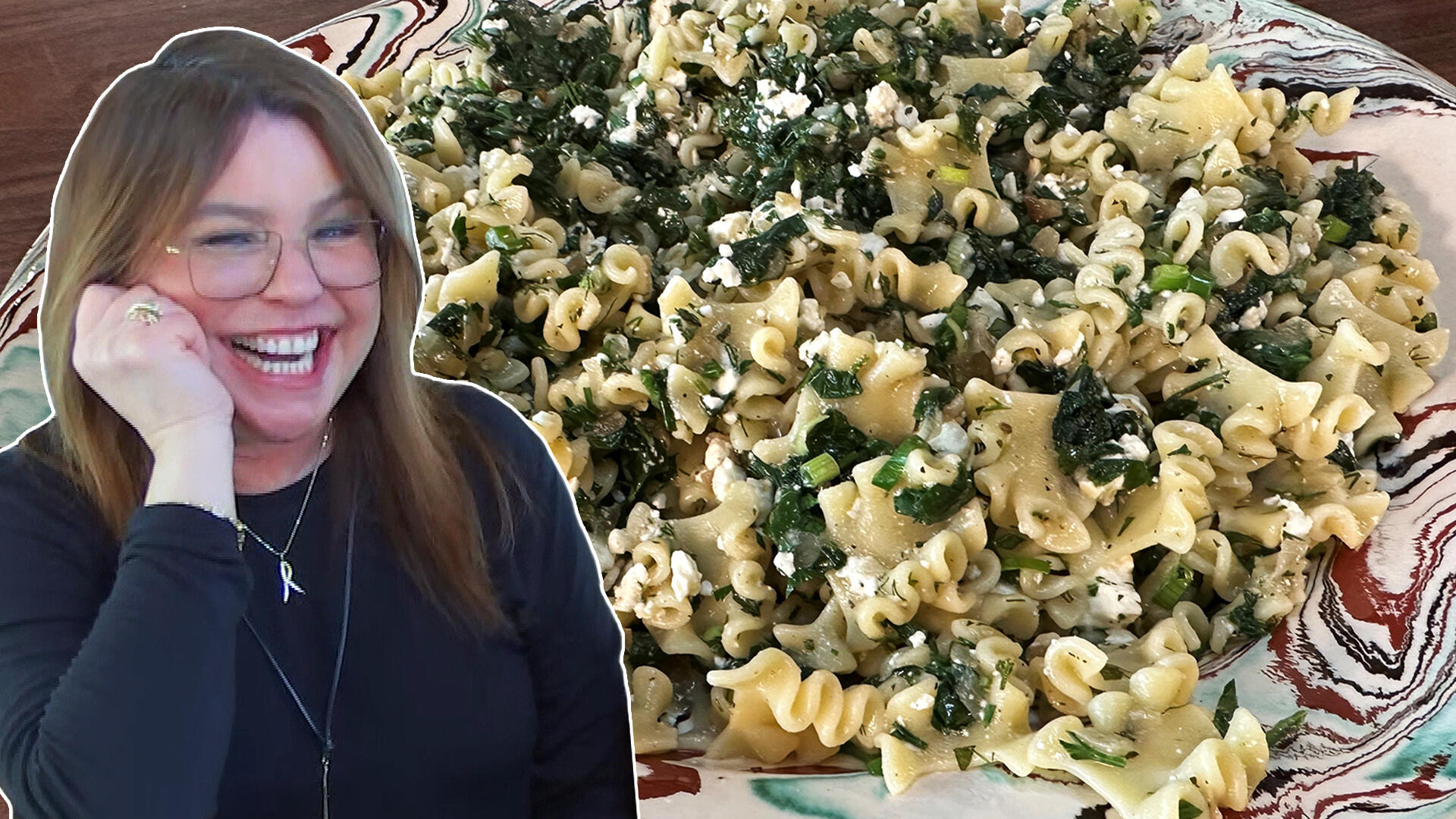

Are Broth & Stock Interchangeable? | Q & Ray + J

Q&A with Organizational Pro Peter Walsh + Dermatologist Shares A…

Actor Hank Azaria + Freezer Meals + Artichokes 2 Ways with Rach

See Inside Barbara Corcoran's Stunning NY Apartment + It's Steak…

How to Make Chicken and Lobster Piccata | Richard Blais

The Best Moments From 17 Seasons of the Show Will Make You Laugh…

Donnie Wahlberg + Jenny McCarthy Say Rach Is Such a "Joy" + Look…

Donnie Wahlberg Spills Details About NKOTB's First Ever Conventi…

How to Make Crabby Carbonara | Rachael Ray

Rach Chats "Firsts" In Flashback From Our First Episode Ever In …

Rach's Chef Pals Say Goodbye to Show in Surprise Video Message

How to Make Apple-Cider Braised Pork Chop Sandwiches with Onion …

How to Make Sesame Cookies | Buddy Valastro

How to Make Tortilla with Potatoes, Piquillo Peppers and Mancheg…

How to Make Shrimp Burgers | Jacques Pepin

How to Make Spanakopipasta | Rachael Ray

Andrew McCarthy Chokes Up Discussing Emotional Trip to Spain wit…

Celebrity Guests Send Farewell Messages After 17 Seasons of the …

Celebrity Guests Send Farewell Messages After 17 Seasons of the …

Andrew McCarthy Teases Upcoming "Brat Pack" Reunion Special

Michelle Obama Toasts Rach's 17 Years on the Air With a Heartfel…
Each product has been independently selected by our editorial team. We may receive commissions from some links to products on this page. Promotions are subject to availability and retailer terms.
Picture it now: you're making a delicious soup recipe and it calls for chicken broth. You open your fridge and all you have is stock! Is your soup ruined?
What's the difference, anyway?
Not much, says Rach. "Stock has a little deeper, richer favor. Broth is just lighter and clearer," she explains.
"They're completely interchangeable," she stresses.
WHAT IS STOCK?
Stock is typically made from simmering various ingredients with onions, carrots, celery and herbs in water for an extended period of time. For vegetable stock, this might include only the ingredients above, but for chicken stock and beef stock, it will include bones (great use for a leftover roast chicken!).
Stock usually cooks from anywhere between two and six hours, and you don't add seasoning since it's typically used to add flavor to soups, sauces, and gravy.
WHAT IS BROTH?
Broth typically contains meat simmered in water, in addition to the same ingredients in stock. Unlike stock, broths come together a lot quicker—sometimes in two hours or less! The shorter cooking time means broth is usually more clear and won't be as rich as stock. Broth can be used in the same types of recipes as stock, but since it has more seasoning, it's a tasty snack on its own.
"Broth is just the byproduct of poaching—like when I make poached chicken," Rach explains. "You can put a little or a lot in there, but you don't want to change the color. You want it to be clear and pretty."
WHAT'S THE DIFFERENCE BETWEEN BONE BROTH (aka bone stock) AND STOCK?
Bone broth has become a popular health trend lately—but it's basically just a trendy name for stock.
Just like a good stock, it's made with "soup bones" that have extra meat and cartilage and simmered for a long time (up to 18 hours—but you really can't overcook it). The goal is to break down the cartilage, which results in a gelatinous, collagen-rich liquid (think meaty Jell-O when you refrigerate it!) that is great for your skin, hair and nails, and your gut health, says nutritionist JJ Smith. Smith claims that it could even help reduce wrinkles!
"Bone stock became really popular because it's literally made with bones, so you get bone marrow and arguably some additional nutrients," Rach explains. "And the marrow has gelatin in it, so it has a different look and feel. But you can buy zero fat and you can make zero fat bone stock, but it's time-consuming. You have to roast the bones or toast the bones, so it's kind of a lengthy process. And then if you want it to be zero fat, of course, it has to be skimmed and skimmed — or [use] a layer of egg white on top to remove all the impurities, so it can be really labor intensive."
"You can't have a vegetarian bone broth, but you can toast the vegetables," Rach adds, "to develop flavor and depth of flavor and color and get that caramelization."
WHEN DO YOU USE STOCK VS. BROTH?
Basically, it's mostly a matter of flavor! They can all be used interchangeably, so no need to stress if your recipe calls for broth and you only have stock, or vice versa.
Making stock or broth can be time consuming. Luckily, there are plenty of great store-bought options of various broths and stocks, including Rachael's Stock-in-a-Box!
Supermarket options can even be enhanced by simmering with some veggies or herbs for a bit, before using it in your recipe.
Of course, everyone can agree: stock or broth, homemade is always best, especially when you're using it for something where you want a rich flavor, like Rachael's hearty chicken noodle soup. (And it doesn't have to be chicken: you can make tasty beef stock, shrimp stock, and vegetable broth at home, using mostly leftovers!)


